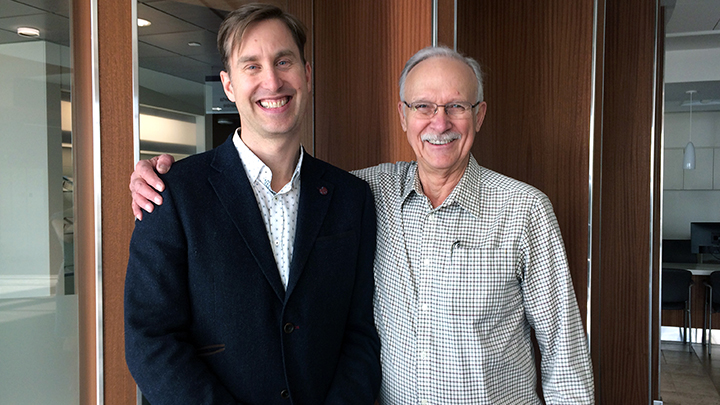
April 10, 2017

Harvey Marchand, 73, says he’s thankful that Dr. Keith Rourke, urologist and director of the urethral reconstruction program at the University of Alberta Hospital, helped him regain control of his bladder following his battle with prostate cancer.
Story by Sharman Hnatiuk
Harvey Marchand wasn’t sure he would ever feel comfortable wearing light pants again or riding a bike, but following a urethral reconstruction, the 73-year-old is back to feeling — and looking — himself as he cycles down the open road.
In 2009, the St. Albert man developed scar tissue in the urethra — the approximately 20-cm-long tube that runs through the penis and connects to the bladder, providing an exit for urine as well as semen — after having undergone a procedure to remove prostate cancer.
The scarring lead to a stricture, or a narrowing of the urethra, that affected his ability to urinate and caused difficulty controlling the urine, known as urinary incontinence. Two previous attempts to remove the scar tissue provided only temporary relief.
“For a time, I had completely lost control of my bladder and had to rely on personal protection pads to get through the day,” says Marchand, who decided to share his story so other men wouldn’t have to suffer in silence.
Five years later, Dr. Keith Rourke, urologist and director of the urethral reconstruction program at the University of Alberta Hospital (UAH), assessed Marchand and recommended a two-step approach to surgery. First, urethral reconstruction was performed to repair the stricture that was resistant to other treatments. Then he implanted a mechanical valve to restore urinary control.
More than 1,200 male urethral reconstructions have been performed at the UAH since 2003, more than any other facility in Canada.
“In some cases, we can repair the urethra by removing the stricture and reconnecting the healthy ends together,” says Dr. Rourke. “More commonly, the stricture is either too long to simply remove and we have to rebuild the urethra using the inner lining of the mouth or an alternative skin graft from the patient.”
Patients with a urethral stricture may suffer from pain, urinary infections and even kidney failure. Typical patient symptoms leading to the surgery include lower urinary tract issues, such as weak urinary stream, straining to urinate, urinary hesitancy, incomplete emptying and excessive urination during the night.
The condition occurs in up to one per cent of all males and across all age groups, but becomes more common as one ages.
“Unfortunately, there continues to be a stigma around talking about men’s urological health,” says Dr. Rourke. “Surgery may sound scary to a lot of men but, thanks to surgical interventions, most patients will see quality of life improve exponentially.”
And for Marchand, this is the case.
“Since receiving the implant, I have control over my bladder again,” he says. “I’m back at work; I can wear light pants without the fear of staining them. I’m out riding my bike again. I have come full circle. I can’t thank Dr. Rourke enough for what he’s done for me.”